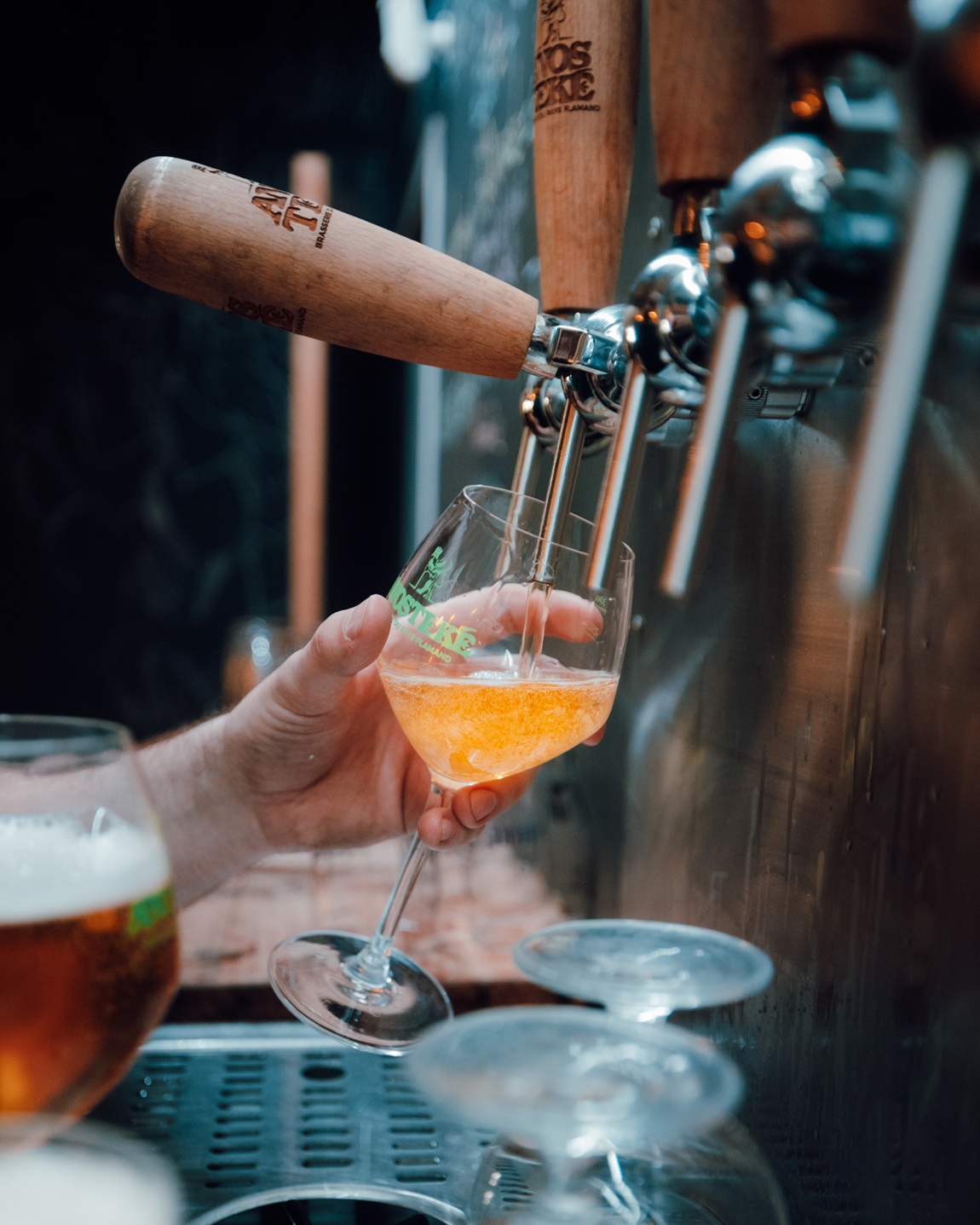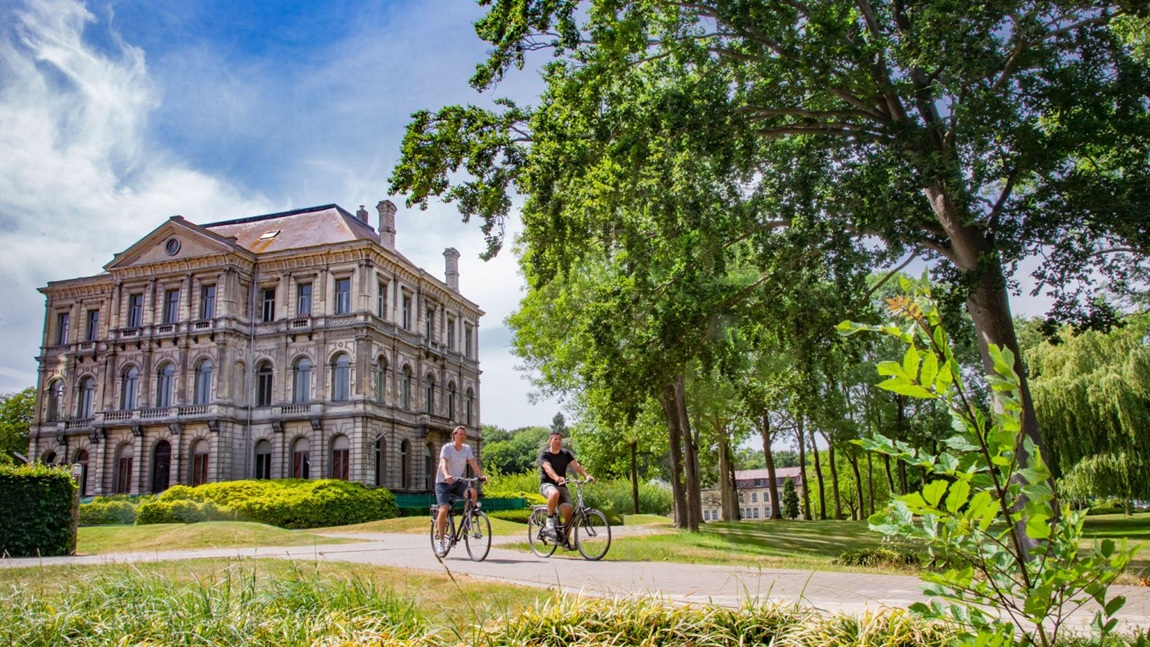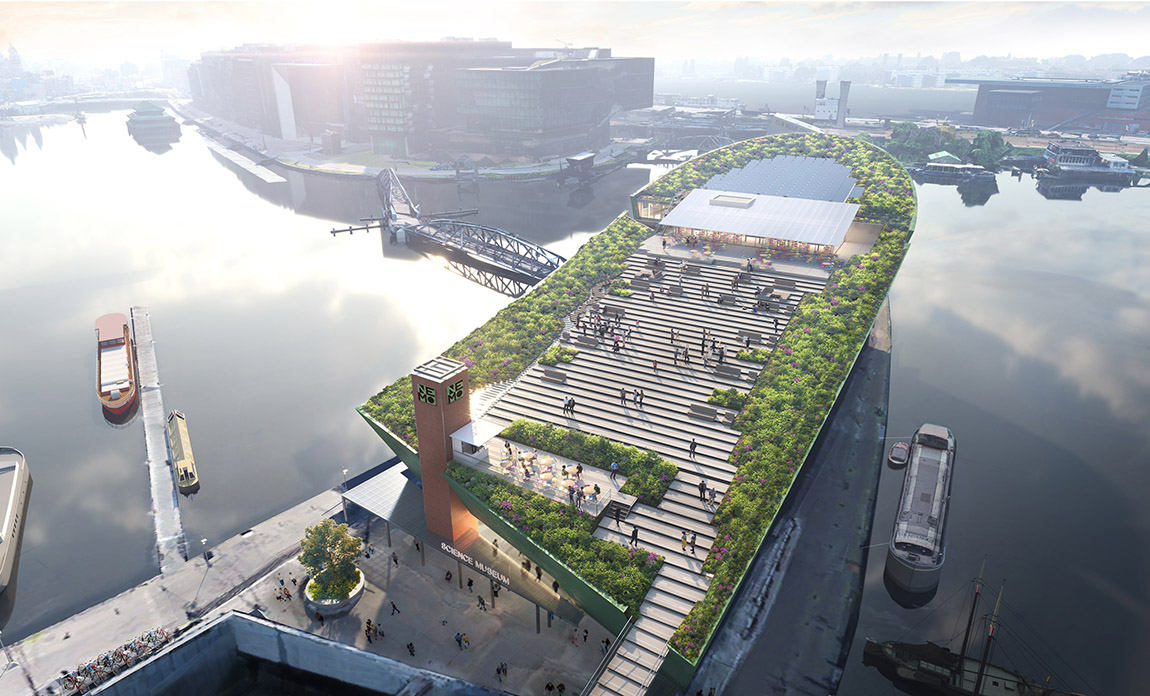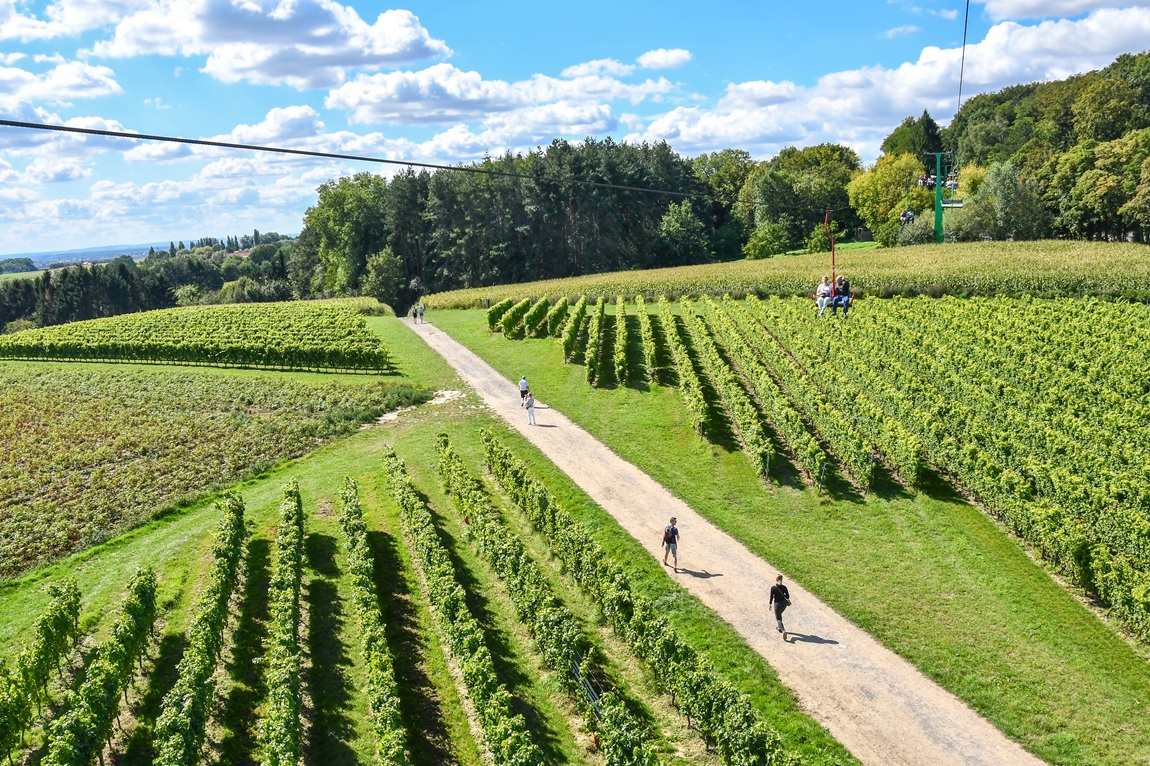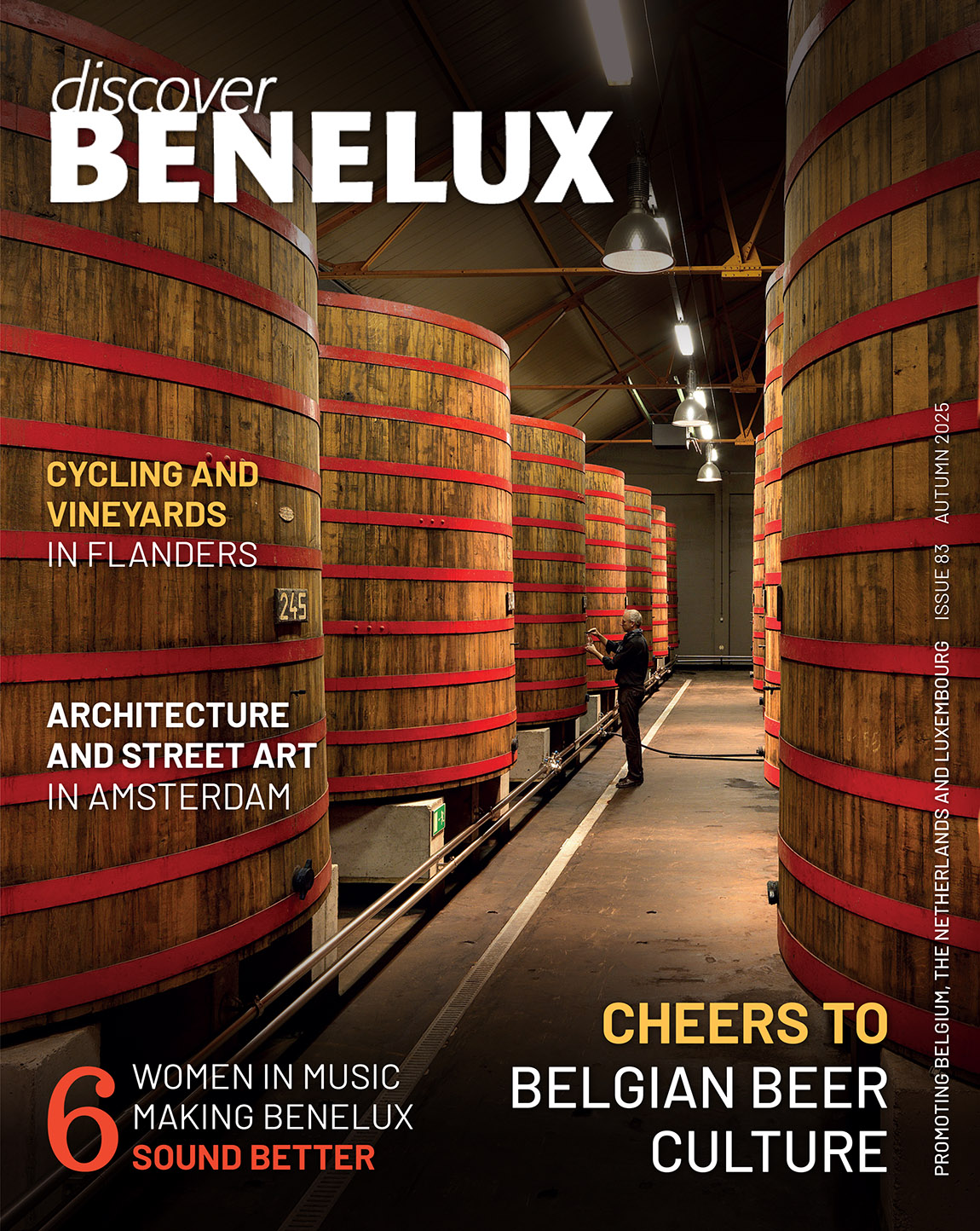Borgloon: the gem of Limburg
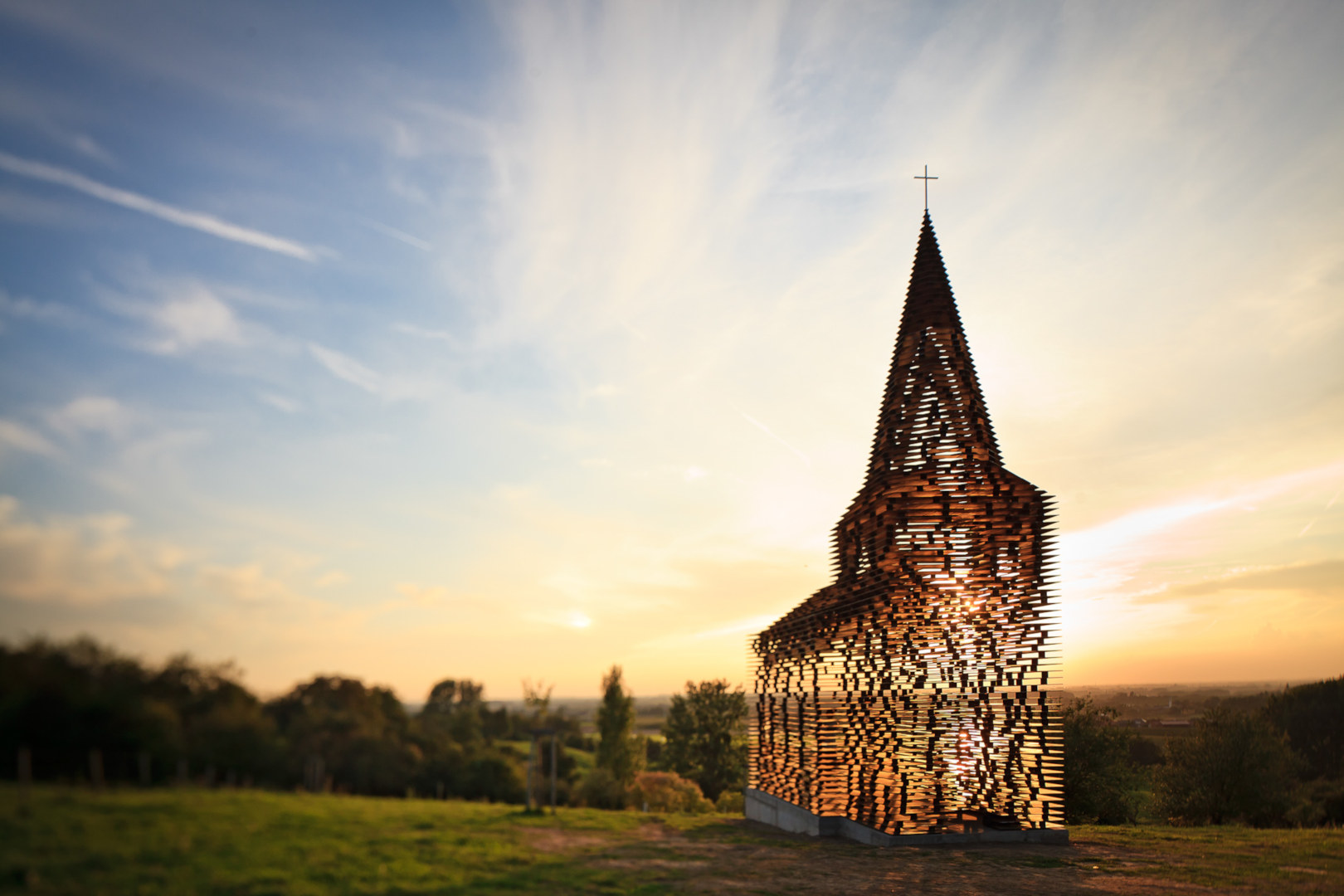
Its inhabitants lovingly call it ‘The Pearl of Haspengouw’ – and for good reason: the city of Borgloon is unique in many aspects. Located in the nature-rich region of Haspengouw, the scenic Flemish town lets history and present collide in the best way possible.
TEXT: CHARLOTTE VAN HEK | PHOTO © Z33/KRISTOF VRANCKEN
All the best things of Flanders – and Limburg in particular – are to be found in Borgloon: regional culinary delicacies, scenic nature and art, historic heritage, and the unmatched hospitality the region is so beloved for.
Italy in Flanders
‘The Tuscany of Flanders’, alongside ‘The Pearl of Haspengouw’, are just two of Borgloon’s many nicknames. They highlight the beauty of the Flemish city, which can be considered small (it houses approximately 10,000 inhabitants), but far transcends its size in terms of art and hospitality.
Borgloon is located in ‘fruit region’ Haspengouw, an area known for its hundreds of thousands of fruit trees that in spring bloom as far as the eye can see. In autumn, the branches of the trees bend under the weight of millions of ripe fruits, which fill the whole region with the aromas of fresh, juicy fruit. “You say Borgloon, you think blossom and fruit,” smiles Annemie Pallen, head of tourism at Borgloon. “In spring and autumn, our landscape creates magical moments.” A statement many agree with: throughout the year, Borgloon welcomes tens of thousands of tourists from all over the world who visit the region to cycle, walk, and admire.
The prominence of fruit is also palpable in the culinary profile of Borgloon: the area boasts many regional delicacies such as confiture, wine, and its famous syrup. The traditional ‘Syrup Feast’ on Easter Monday is considered the annual highpoint by many locals and visitors.

TRANENDREEF BY DRÉ WAPENAAR
Historic prominence
Borgloon was historically the capital of the county Loon (which boasted the size of the current province of Flemish Limburg) and has held an important position throughout its entire existence. The county Loon was founded almost 1,000 years ago.
Borgloon’s history can be found everywhere. The Town Hall dates back to the 11th century and is considered one of the most beautiful civilian buildings in South-Limburg. It was restored in Maasland style in 1680. “Originally, the town hall was the residence of the counts of Loon,” Pallen explains. “Upon his departure, he gifted his home to the people of the city. That’s why we still call it Count House.”
Another reminiscence of Borgloon’s history is the Burchtheuvel – a 118-metre high hill which used to house the fortress of the Loon counties. The strongly dilapidated castle was demolished in 1870, yet the top of the hill still provides a beautiful panoramic view of the region.
Art in Borgloon
Attracting visitors from all over the world, the project ‘Pit’ kicked off in Borgloon in 2011: an artistic trajectory initiated by the province of Limburg and Z33 – the contemporary art and architecture museum in Hasselt – showing eight open-air artworks by artists in the region of Borgloon-Heers. Displaying artworks that enter into dialogue with the landscape and local heritage, the works are placed along existing cycle and hiking routes.
Reading between the lines by artists Gijs Van Vaerenbergh (consisting of duo Pieterjan Gijs and Arnout Van Vaerenbergh) – is an absolute highlight of the Z33 project. Looking like a see-through church, the work is ten metres high and made of 100 layers. Depending on the perspective of the viewer, the church is either perceived as a massive building or seems to dissolve in the landscape. Reading between the lines was named ‘Best Spot in Belgium’ by renowned British newspaper The Guardian in 2017.

UNTITLED #158 BY AENEAS WILDER
‘Z33 – art in public space’ is a unique art project in the landscapes of Borgloon. These magnificent works of art are well worth a visit:
Gijs Van Vaerenbergh – Reading between the lines. An absolute show-stopper of the Z33 project: looking like an enormous church, the work uses horizontal plates to transform the concept of a traditional church into a transparent object of art.
Aeneas Wilder – Untitled#158
Built nearby the Abbey Mariënlof in Kerniel, this doughnut-shaped pavilion by Scottish artist Aeneas Wilder offers visitors a view across the landscape of Limburg. Entering the artwork is a special experience that refers to religious themes and reminds us of walking around a monastery. When you are inside the artwork, you will hear that the sounds of the environment are muted and changed, which makes the experience extra special.
Wesley Meuris – Memento
Memento is a sculpture at the central burial ground of Borgloon. The artwork of Wesley Meuris is an anchor point in the sloping landscape and invites visitors to step inside. The architectural structure of the work provides a special experience of looking and dwelling, and the steel-built space can be interpreted in many ways by the visitor, challenging the imagination.
Web: www.borgloon.be

MEMENTO BY WEASLEY MEURIS
Subscribe to Our Newsletter
Receive our monthly newsletter by email

